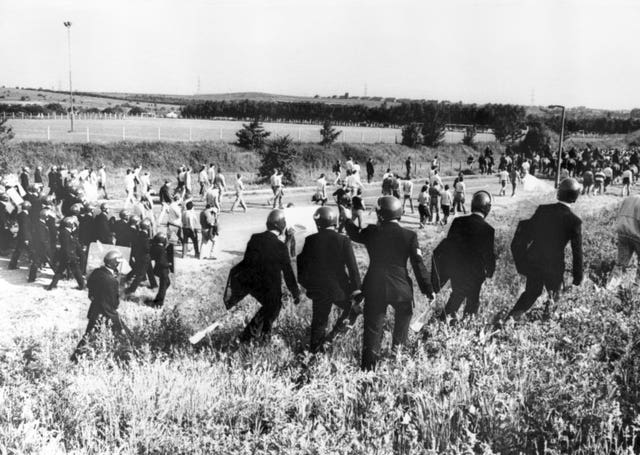‘Heartbreaking’ memories of Miners’ Strike pulled together for 40th anniversary
The year-long strike, which began in March 1984, divided coalfields and even families.

The 40th anniversary of the Miners’ Strike is being remembered with the “heartbreaking” testimonies of both the strikers and those branded scabs after they decided to return to work.
Next week marks 40 years since tens of thousands of mineworkers walked out in what became one of the defining events of late 20th century British history but has left families and communities divided to this day.
She said this includes the memories of the miners and their families who were on strike for a year.
But it also includes those who decided they had to return to work and those in the coalfields where most miners defied the call to walk out from National Union of Mineworkers president Arthur Scargill – most notably in Nottinghamshire.
Ms Dunning told the PA news agency: “The exhibition is really to try and give a voice to as many different opinions and experiences as possible.
“Quite often we hear a lot from the men who were on strike.
“We’re all familiar with the stories of people struggling to put food on the table, to pay their mortgages, etc. And some people did feel the pressure, as the strike went on, to go back to work early.”

“Those are stories that we all need to hear and experience.”
She said: “This exhibition takes the politics out of it and it’s really about what those people experienced and just how difficult it was.
“And, the long-term impact that that experience has had on those families and those communities comes across really strongly as well.”

“You can still see the impact of that in those communities today.”
The strike began after the National Coal Board announced in March 1984 that 20 pits would close with the loss of 20,000 jobs.
It lasted for a year and was mired in conflict – especially when the Nottinghamshire miners refused to follow colleagues in areas like Yorkshire and South Wales out on strike.
There was violence on picket lines as thousands of police from all over the UK were ferried into the coalfields.
Exhibition curator Anne Bradley said the show does feature some artefacts but its core are the first-hand accounts from those who were there, which she has collected through a series of interviews.
Ms Bradley said that her interviews showed that many of the old enmities are still there. Some contributors would only take part on condition of anonymity.

Ms Bradley said: “We’re a national museum and we have to reflect what was happening in all the different coalfields in England.
“I think it’s quite a well known story, the story of striking miners on the picket lines, and the policing.
“I think those stories of those who either chose not to strike or who couldn’t because of the position that they were in or the unions that they were working for, and those that made that decision to go back early, are stories that we don’t hear.
“And this is a really good opportunity for us to diversify our collections, collect those stories and those voices while we still have the chance.”
She said: “We’d like to provide the opportunity for our visitors to perhaps have little bit of empathy, to look 40 years on and see that people were making decisions that they had no idea that 40 years on could still lead to them not speaking to members of their families, not speaking to friends.
“We’re not asking anybody to change their opinion of the strike but we’re hoping that people might just stop and think, maybe look at a different point of view.
“I think if we’ve done that then we’ve done a good job.”
:: The exhibition, which is called 84/85 – The Longest Year, opens at the National Coal Mining Museum on Wednesday March 6. Entry is free. More details can be found at www.ncm.org.uk/84-85





